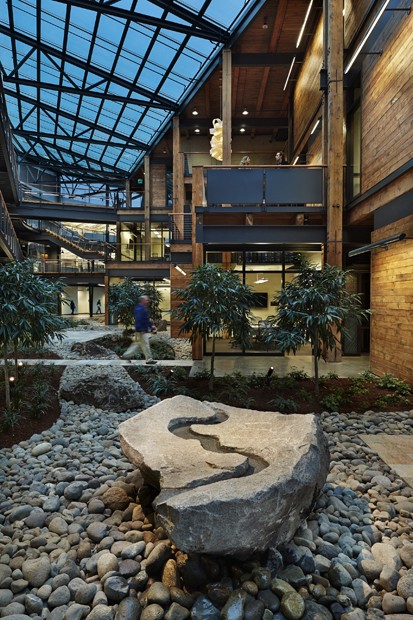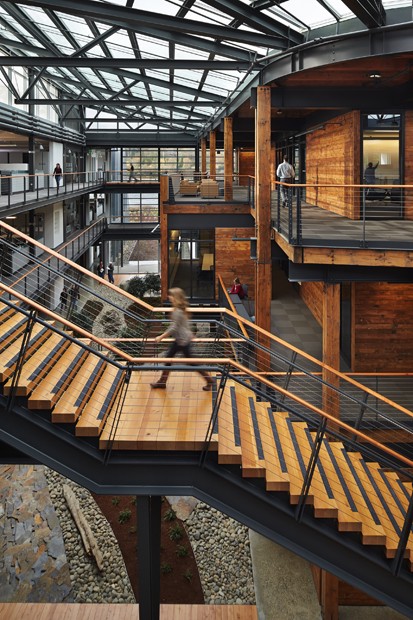Architects tend to respond to changes in society, whether it’s sending skyscrapers higher to cope with real estate prices and not enough space, or in creating “mixed use’’ structures with both residential and commercial areas to provide the public with more interesting streetscapes.
Today, it’s about the environment. For architects, that means making sustainable buildings that save energy and reduce carbon. “With the staggering amount of building and rebuilding that will take place worldwide over the next two decades, the need to build sustainably, and dramatically reduce carbon emissions in the built environment is essential,” says Edward Mazria, an internationally recognized architect, author and speaker who has initiated a global dialogue on climate change and building design.
In fact, responding to the urgency of the climate crisis, the built environment, led by the non-profit Architecture 2030 — an organization Mazria founded in 2002 — has taken the first steps toward eliminating fossil-fuel carbon dioxide emissions from buildings by the year 2050, an effort not aimed solely at U.S. architects, but globally.
Among other things, the organization has challenged the worldwide architecture and building community to design all new buildings in ways that will reduce greenhouse gas (GHG) emissions by 70 percent when compared to the region’s current average for that type of building.
It also seeks to increase the fossil fuel reduction for all new and major renovations incrementally, so that by 2030 they will be designed carbon neutral — meaning no greenhouse gas emissions to operate at all. The organization also wants to achieve a global carbon-free built environment by 2050.
Today, more than half of the world population lives in urban areas, with cities generating more than 70 percent of global greenhouse gas emissions, mostly from buildings, according to Architecture 2030. By 2030, world urban population is expected to increase by 1.1 billion people. “To put this in perspective, 1.1 billion people is about the entire population of the Western Hemisphere,’’ Mazria says.
The world’s total building stock today is approximately 150 billion square meters, consisting of an estimated 75 percent residential and 25 percent commercial floor space, according to the organization. Each year to 2025, about 2 to 3 billion square meters of building floor space will be built new and rebuilt (replacing older buildings) worldwide to provide the necessary housing and services — grocery stores, schools, offices, restaurants, retail spaces, places of worship, airports, etc. — to provide for population growth and an unprecedented urban migration, the group says.
“Considering the energy that most buildings demand — for lighting, heating in winter, cooling in summer, electronics, computing, refrigeration and cooking — any significant reduction in energy consumption potentially could have a huge impact on emissions that enter the atmosphere and contribute to the escalating and dangerous warming of the planet,’’ Mazria says.
In fact, buildings are responsible for about 47 percent of global greenhouse gas emissions and 49 percent of the world’s energy consumption, according to Mazria.
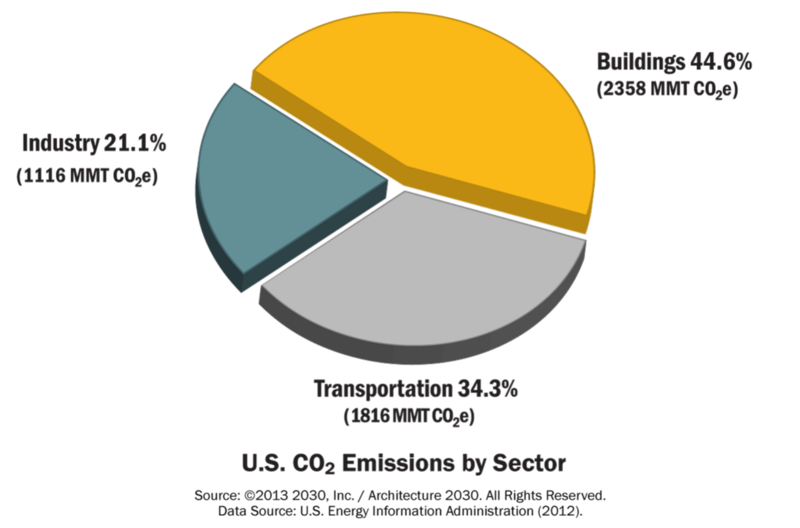
Architects and builders can achieve these proposed targets by first using sustainable design approaches, and then by generating on-site renewable power and/or procuring renewable energy, he says.
“It’s extremely important that the worldwide architecture community begins designing to zero net carbon standards — highly efficient buildings that produce on-site, or procure, enough carbon-free renewable energy to meet building operations energy consumption annually — in order to meet the 2050 goal of zero fossil fuel CO2 emissions established by the climate agreement reached in Paris last December,” Mazria says.
Members of the International Union of Architects (UIA), a professional organization representing more than 1.3 million architects in 124 countries, backs this plan, and issued its own declaration two years ago, the 2050 Imperative, which pledges to end fossil fuel CO2 emissions in the built environment by 2050.
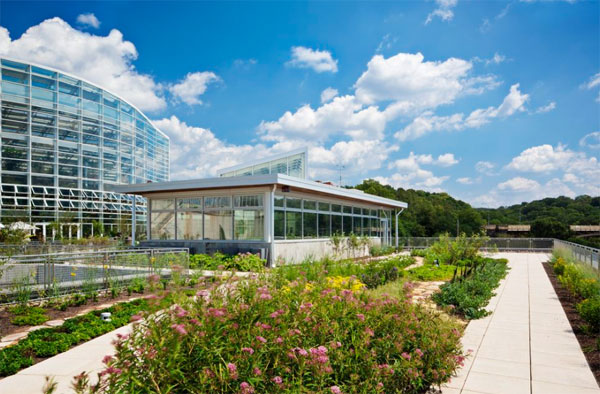
“Our responsibility is to influence ethical and socially responsible development throughout the world: to plan and design sustainable, resilient, carbon-neutral and healthy build environments that protect and enhance natural resources and wildlife habitats, provide clean air and water, generate on-site renewable energy, and advance more livable buildings and communities,’’ the document says.
Moreover, all of the regional architect councils of Europe, Asia, the Americas and Africa have endorsed it, “an action unparalleled in the 65-year history of the UIA,’’ Mazria says.
In the United States, architects, builders, land use planners and others already have made great gains in the built environment, and, in fact, have exceeded many of the targets laid out in Architecture 2030’s roadmap, “showing that it can be done,’’ Mazria says. “While we have added a significant amount of floor area to our building stock since 2005, our energy consumption and emissions in the building sector are lower today than they were in 2005.”
For example:
- The U.S. Energy Independence and Security Act of 2007 (Section 433) and Executive Order 13423 require all new federal buildings and major renovations to be carbon neutral by 2030.
- Local governments have been adopting national building energy code standards that call for a 50 percent energy consumption reduction below regional building averages. In California, where energy conservation and the environment always have been a priority, the state energy commission will require all new residential construction to be zero-net-energy by 2020, and all new commercial buildings by 2030.
- 2030 Districts, an initiative consisting of private/public partnerships in fifteen U.S. cities (Seattle, Cleveland, Pittsburgh, Los Angeles, Stamford, Ithaca, Dallas, Toronto, Albuquerque, San Francisco, San Antonio, Grand Rapids, Denver, Portland, and Austin) have set incremental district-wide energy, water, and transportation emissions reduction targets to reach 50 percent in large urban areas by 2030. Other such districts are forming in cities across the United States and Canada. These districts bring property owners and managers together with local governments, businesses, and community stakeholders to work toward urban sustainability.
- The 2030 Palette, an accessible, visual, integrated, and user-driven web-based platform began in 2013. “This living platform, which is constantly growing and changing, places straightforward principles, actions, and tools behind low-carbon/zero-carbon, sustainable and adaptive built environments — from regions, cities and communities, to buildings and building elements — at the fingertips of professionals and non-professionals worldwide,’’ Mazria says. “Since planning and designing the built environment is primarily a visual activity, the 2030 Palette presents a visual network of interrelated elements called Swatches. These Swatches provide highly complex and multi-dimensional information in a readily accessible format.’’
- The Zero Cities Project, a new program working with cities to develop ways to reach 80 percent to zero emissions by the year 2050.
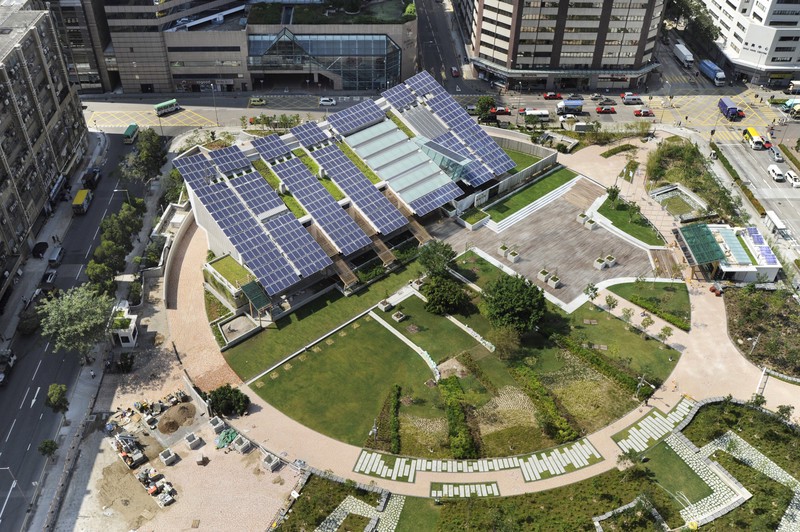
If all the initiatives underway today are successful, “we won’t need additional electricity generating capacity — meaning no more new power plants — and can begin reducing capacity and phase in renewable energy to service the building sector, so that by 2050 the building sector is carbon-free,’’ Mazria says.
Moreover, living in more energy efficient buildings, Americans would spend trillions of dollars less on energy in the years leading to 2050, adding more money to their wallets, as well as generating tax revenues for schools, public transportation, infrastructure and other services.
In fact, a new report issued recently by the Department of Energy, said that even modest changes over the years in building codes could save consumers an estimated $126 billion between 2010 and 2014, a carbon pollution reduction of 841 million metric tons.
In the aftermath of the Paris accords, “considering the contributions that urban areas historically have had on emissions, the commitment of the global built environment to reach its targets could have a dramatic impact on the outcome [of the agreement],” Mazria says.
“We have a once-in-a-lifetime opportunity to create a zero carbon built environment that can change the current, disastrous course we’ve been on,’’ he adds. “The worldwide architecture, planning, and building community must not only must keep this momentum going, but lead the way.’’
Marlene Cimons writes for Nexus Media, a syndicated newswire covering climate, energy, policy, art and culture.


